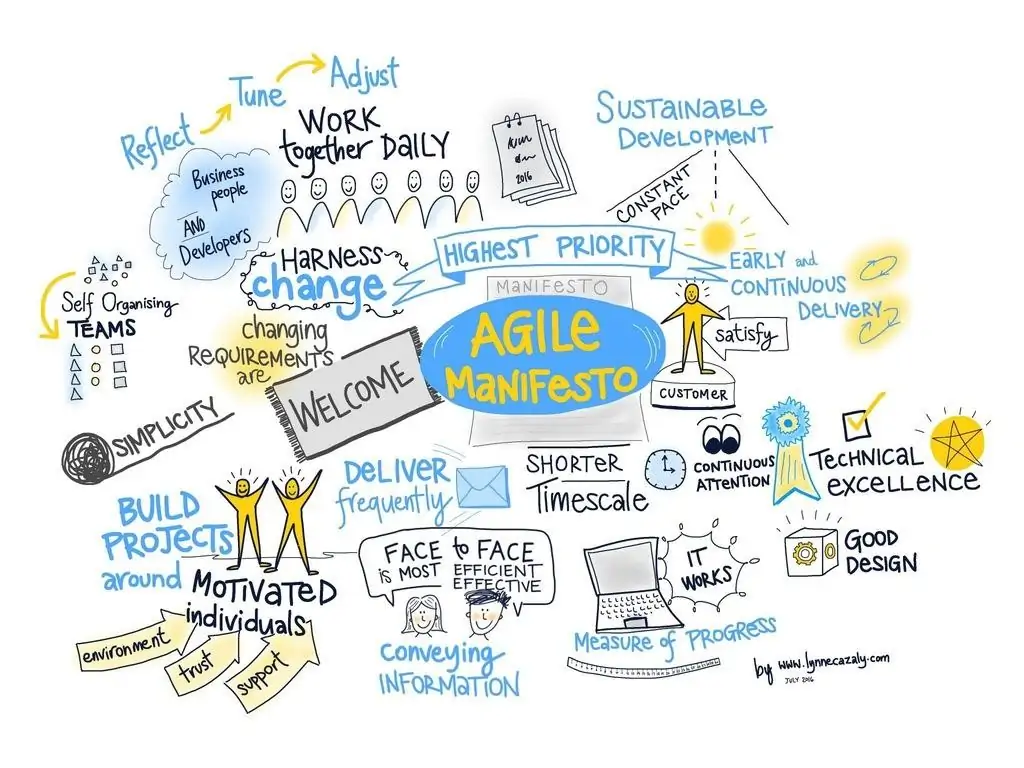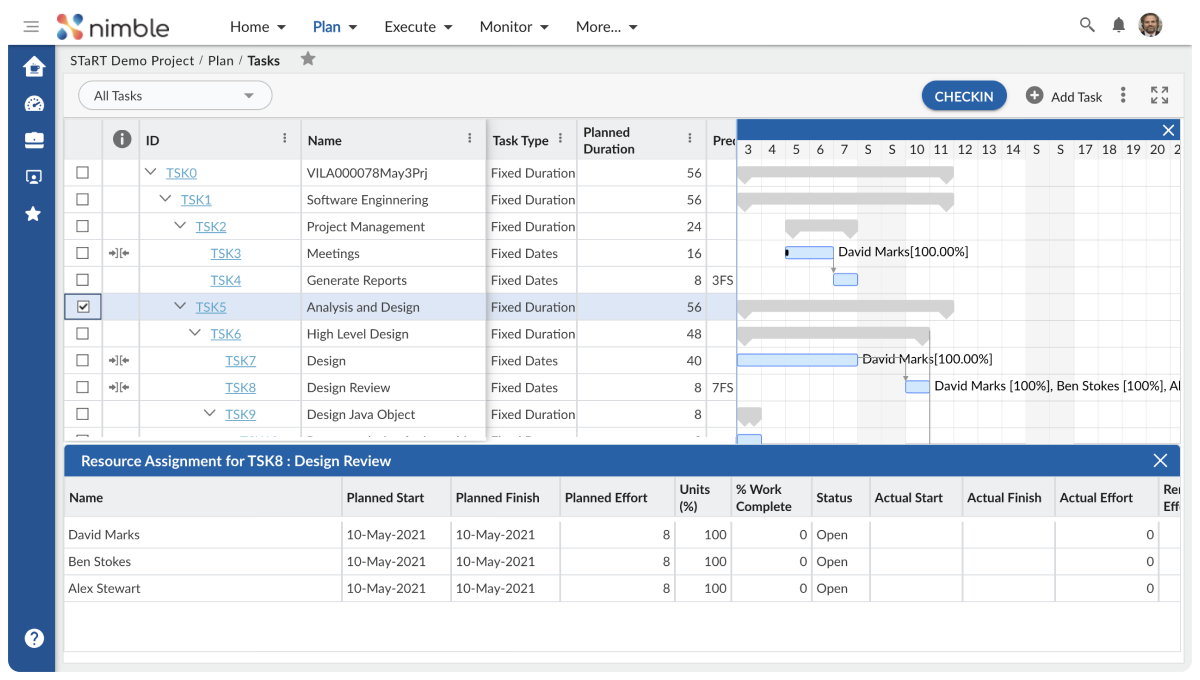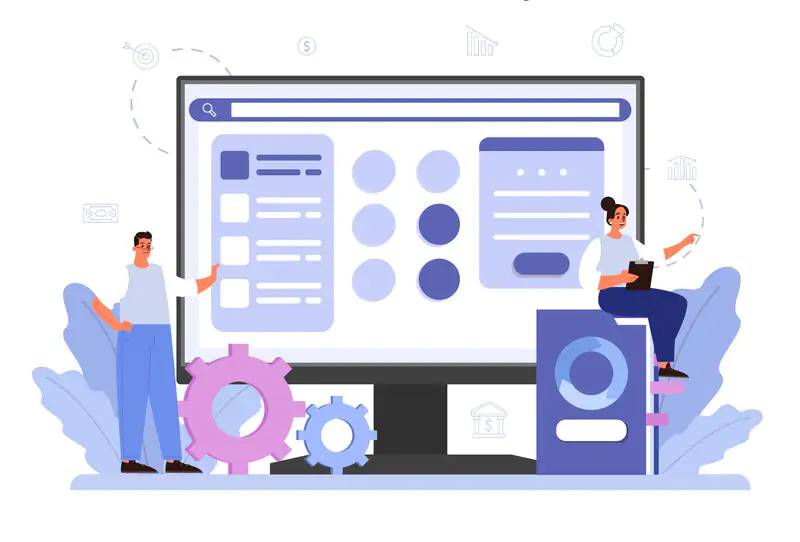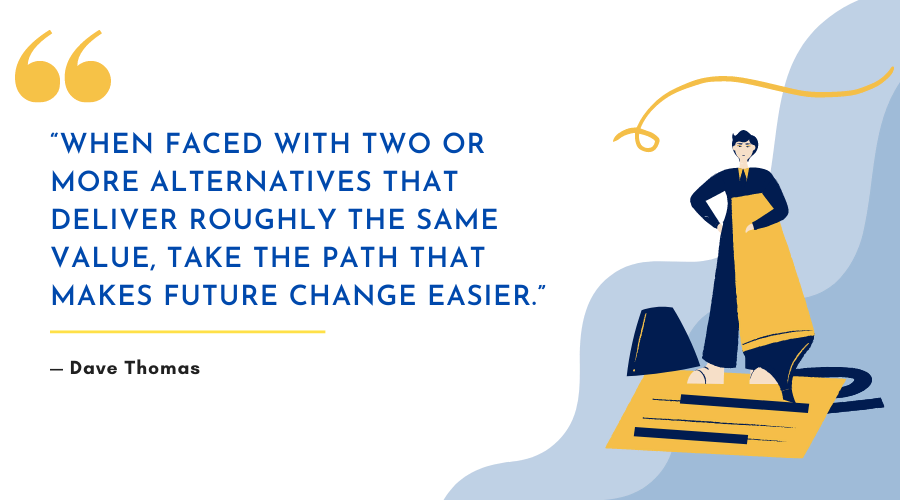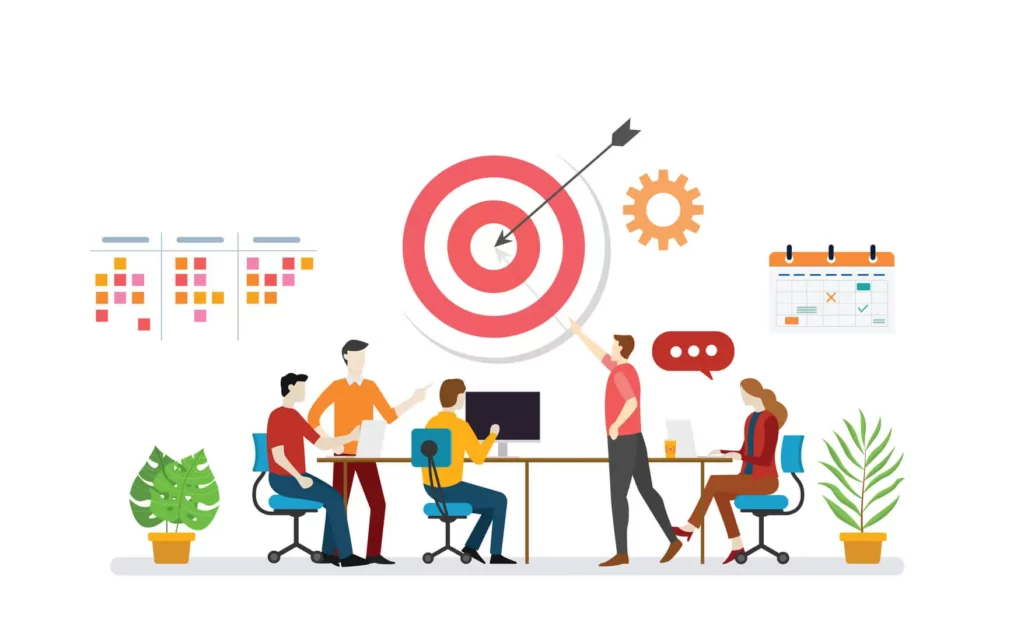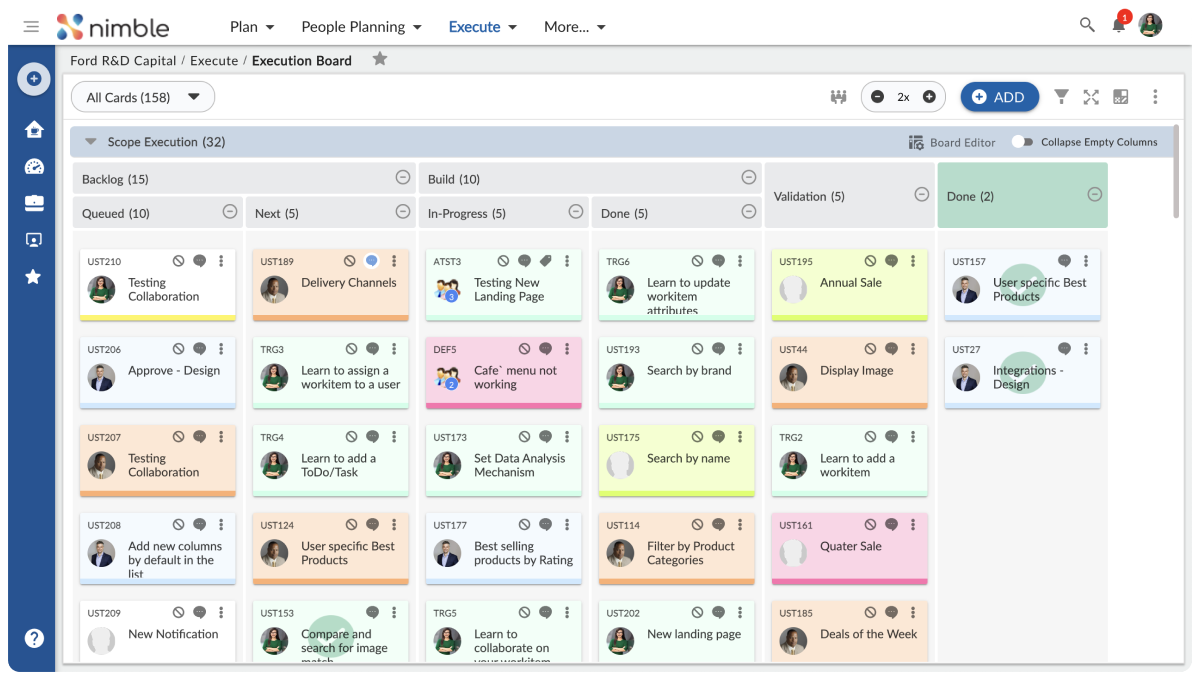Navigate to
What is Agile Program Management?
- 15 mins read
-
By Marjan Venema
- Updated on January 31, 2024
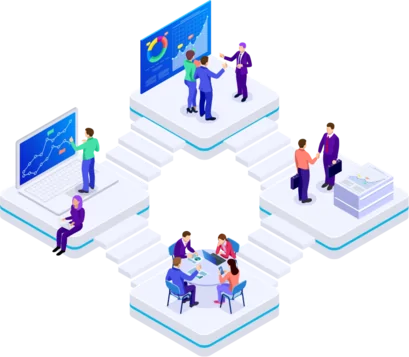
Agile Program Management: The Easiest Route to Your Agile Business
Maybe you’ve been watching IT successfully go ‘agile’ a couple of years ago. Just the flexibility to respond when the world changes and you face different customer expectations, makes your mouth water. Well, that’s where Agile Program Management comes in.
Agile program management, including agile portfolio management, shifts the focus from managing projects and initiatives that touch many products and departments, to managing coherent product groups.
It can be defined as managing interrelated programs of multiple, complex products and services using Agile values and principles. The product focus helps reduce complexity because it allows agile program management to concentrate on the dependencies while the product managers and multi-disciplinary product teams can concentrate on their own product.
Agile program management focuses on delivering value in a continuing iterative and incremental stream.
It applies collaborative, agile techniques to provide value to customers and all the stakeholders in an enterprise.
Using agile values and principles for program management provides a different way of thinking and working towards organizational change that simplifies the work and reduces overhead.
Many agile tools are adapted to portfolio and program management, helping you deliver your strategic goals on an enterprise-wide basis.
Brief History
Source: LynneCazaly
Their organizational values soon spread to other forms of agile management. For example, Jim Highsmith, an original Agile Manifesto signatory, published a book called Agile Program Management: Creating Innovative Products in 2004.
By 2015, the use of agile techniques had ballooned to more than 50% of software development teams.
At the same time, Agile ways of working began to scale up from management of just one to multiple software products that are related or dealing with different aspects of large complex programs.
Inevitably, scaling continued to bundle multiple programs together and manage large, complex programs.
More recently, Agile techniques have spread their wings beyond software development programs into programs within other corporate activities such as HR and marketing.
Businesses are now looking for the transformation of their whole enterprise to make their business agile, seeking coaching, training, and tools adapted to portfolio/program management.
What is Agile Program Management?
Agile program management is applying agile values and principles to the management, organization, and support of programs covering multiple initiatives, activities, products, and services.
It began with taking the values and principles set out in the Agile Manifesto and applying them beyond their original scope in software development.
Where it gets interesting is when:
-
You bundle related products into a program.
-
You seek to apply agile values and principles in large programs with multi-disciplinary teams.
-
You have multiple programs that need to integrate their results.
-
You undertake programs to turn a whole business agile, including software development, DevOps and IT management, marketing, human resources, and the entire range of corporate activities.
Enterprises are finding it makes more sense to use Agile program management (sometimes referred to in an enterprise-wide context as agile portfolio management) to transform every aspect of each department, program, and products.
Not just to form a view of how an enterprise is performing overall, but to align an enterprise’s activities to its strategic plans and to make the whole business agile.
This transformative journey is further empowered by Nimble Agile, which seamlessly integrates with the Agile program management approach. Nimble provides the tools needed to orchestrate and streamline various departmental initiatives and programs, ensuring that they align cohesively with the enterprise’s strategic vision.
Teams can collaboratively plan, execute, and monitor their Agile projects, fostering a culture of agility and adaptability across the entire organization. As enterprises navigate the complexities of modern business landscapes, Nimble acts as a guiding compass, enabling them to realize the full potential of Agile program management and drive their businesses to new heights of success.
What Does Adopting Agile Program Management Mean for Your Business?
What does all this mean in practice? It means changing virtually everything about the way you organize work, including:
-
planning in shorter increments instead of the “big up front planning” approach.
-
rapid changes in strategic direction and program outcomes based on changing market conditions and customer feedback.
-
decentralizing decisions.
-
creating transparency and alignment around strategic goals and how you organize your work.
-
finding a balance between autonomous teams and cross-team dependencies.
-
delivering sooner and perfecting products in increments.
-
collaborating with each of the teams working on a program, other professionals throughout your business and with your customers.
-
updating, replacing and integrating your information systems to enable transparent information flow throughout your company.
Despite that mountain of work, if you use agile program management techniques, it’s easier to implement an enterprise’s strategic plans across its portfolio of departments, programs and products. It may not be easy, but it’s the easiest route to corporate transformation.
For more information on adopting agile at scale, read our article on six scaled agile frameworks and listen to this webinar on Scaling Agile at the Program Level.
Adopting Agile Through Nimble
Nimble Agile plays a pivotal role in Agile Program Management, revolutionizing how organizations plan, initiate, and execute initiatives within complex, iterative environments. With a keen focus on scaling Agile, Nimble streamlines the coordination of diverse projects, facilitating seamless communication and collaboration across teams.
Its robust features enable comprehensive visibility into program progress, ensuring alignment with strategic objectives. Nimble’s flexibility accommodates iterative development, fostering adaptability to evolving project requirements. By providing a centralized platform for planning and execution, Nimble empowers Agile organizations to navigate the intricacies of program management with efficiency, transparency, and success.
Principles and Practices of Agile Program Management
The Basics
Agile Program Management starts with the same four core values and 12 principles of Agile methodology as set out in the Agile Manifesto. Agile program management also espouses lean principles to cut out waste and streamline efficiency.
The 3 Key Elements of Agile Program Management
Program managers strive to deliver three key elements:
-
effective collaboration
-
constant/ (frequent,/ incremental?) planning and delivery of business value
-
an appropriate level of quality.
How do they deliver these elements through their agile management skills?
The Change in Perspective
Winning Hearts and Minds: the Importance of the Agile Mindset
Collaboration with All Stakeholders
Aligning Actions with Strategy
Valuable Outcomes Not Outputs
Allocation of Resources
Program managers facilitate and optimize the allocation use of resources (people, technology, equipment, etc.) to improve performance and profitability across teams and programs.
For example: LeSS (Large Scale Scrum) considers how many teams are required to develop a product or product group, and that dictates how many people and other resources needed to form and support those teams.
Program managers allocate budgets by considering who is delivering the most value, who needs greater skills, where teams are located, and many other factors.
Teams can plan their work better when they have insight into the resources available to them.
Managing Dependencies
In complex programs, internal dependencies may cause delays. For example: ‘done’ and delivery may be delayed because the testing teams have limited capacity, which increases the waiting time for the product teams.
Visualization tools such as Portfolio Kanban can help to identify and map dependencies for program managers to sequence work optimally, remedy the delaying factors (e.g. divert resources to testing) and improve work flow.
Performance Management
While teams are trusted to organize themselves and deliver their feature or product, the focus for program managers as regards their performance is on the value delivered to the clients and their end users.
Using lean and agile metrics, program managers can measure work flow such as how long it takes to take an idea and put it into the product for delivery to users/clients. They can also keep track of performance by monitoring burn down (or burn up) rates of delivered value or the product backlog.
Kanban is a great tool for identifying improvements in workflow, reducing cycle time and increasing value to the customer as most kanban metrics are product/ value-oriented.
Risk Mitigation
Similarities and Differences
Agile Program Management vs Traditional Program Management
Agile program management focuses on delivering business value to all stakeholders, e.g., employees, contractors, and shareholders, plus the enterprise’s customers and end-users. The aim is to deliver a solution that solves the customer’s problem.
Traditional program management is focused on agreeing upfront on what to deliver and then efficiently delivering that at the scheduled time.
Both break down work into smaller bits so it’s easier to keep tabs on progress. The big difference lies in how the work is broken up.
Agile seeks to deliver value right from the start and build upon what has already been delivered and proven to have value. To accomplish that, it breaks work into small, independent, and testable units that provide value to customers on their own.
Traditional’s focus on efficiency means it breaks down work to maximize efficiency which may delay delivery of any value until all work completes.
Because of the way agile program management breaks down work, it can respond to changes as they arise. Work already done is already delivering value, even if you prefer some changes to it. You’re always free to prioritize what gets done next — changing work already done, or proceeding with work to be done — based on the business value you expect from it.
This is in sharp contrast to how traditional program management doesn’t like changes and goes to great lengths to avoid them.
Because the work breakdown is efficiency-oriented, changes to what was originally agreed upon, often render work already done obsolete or in need of redoing, adding to the program’s cost and timeline, meaning the planned product(s) delivery of value gets delayed too.
Key Roles and Responsibilities
The key roles in Agile Program Management are as follows:
-
Executive management sets the strategic plan and direction of the enterprise or a business unit (including transformation into an agile business). They define which outcomes and objectives drive the business forward and what value everyone in it needs to deliver to achieve them.
-
Program Managers seek to align value delivery through development of the products in their program with the business’s strategic objectives and customer demands with regard to multiple products. They optimize performance for the program as a whole and set priorities dealing with desired cross-product integrations.
-
Product Managers are the bridge between all the stakeholders around a product or product group. They manage the product road map that balances the business’ strategic objectives and cross-product requirements with customer demands and the available capacity for product development.
In Agile, development teams generally decide themselves how to do their work in alignment with these priorities. However, depending on your Agile Scaling framework of choice, you can also find specific roles such as a System or Chief Architect responsible for high-level technical design of a product (suite).
Many Agile Scaling frameworks also define specific coordination roles such as a Chief Product Owner coordinating specific Product Owners (Scrum at Scale)— or the other way around Area Product Owners helping a single Product Owner (LeSS), a Scrum of Scrums Master (Scrum at Scale) facilitating the Scrum of Scrums team, or a Release Train Engineer (SAFe) coordinating the PI delivery by multiple teams.
Key Meetings, Cycles, Delivery Cadences
The ones that Agile companies do follow usually stem from Agile Planning practices and frameworks to scale agile such as SAFe, Large Scale Scrum (LeSS), Disciplined Agile Delivery, and others.
The main thing to note is that these Scaled Agile frameworks promote synchronization of product development teams into a single cadence. If not across the company, then certainly across a product or product group that’s part of the agile program.
For example, in SAFe you’ll find release trains. In LeSS all teams in all product areas follow the same cadence. In SAFe you’ll also find guidance on quarterly Program/Product Increment Planning and how that follows from the planning at more strategic levels — all the way up to the business owner or top management.
For more on planning, read our article on Agile Planning.
Methods, Frameworks, Techniques, Practices and Tools
Methods and frameworks
There is a growing body of methods and frameworks that help enterprises with agile program management. Some of them are:
-
Portfolio Kanban: extends the much loved Kanban visualization tool to program and portfolio management. Look at Portfolio Kanban or at “Enterprise Transformation With Integrated Portfolio Kanban” on how Kanban can help with enterprise transformation to Agile working.
-
Scaled Agile Framework, (SAFe*): is a scaled agile framework that works with teams, programs, and portfolios. For more on SAFe* frameworks, see Scaling Agile with SwiftEASe and SAFe®.
-
Disciplined Agile (DA): provides a framework to help businesses manage diverse business functions in an agile way so they can transform into a Disciplined Agile Enterprise.
-
Scrum@Scale (SaS): provides a scrum master cycle and a product owner cycle that together seek to link product development to a company’s strategic vision.
-
Large Scale Scrum (LeSS) and LeSS Huge: are Scrum writ large. They provide frameworks for adopting and applying agile at scale according to business size. Learn more with our comprehensive overview of LeSS
-
Nexus: another scrum-based framework that strives to reduce complexity and dependencies to make scaling easier.
Tools
Having an easy-to-use system to find information and track value delivered is essential for program managers.
Kanban and other agile tools that can link the strategic portfolio/program level objectives to the day to day work in teams will help them see obstacles and dependencies restricting the flow of product and value to the customer.
There are many to choose from, but our very own Nimble Agile supports all of the tracking of the programs and initiatives in your enterprise!
Here are some of the common pitfalls in transforming your enterprise into agile ways of working:
-
Imposing changes rather than guiding teams and departments in their own journey to agility. Imposing changes hardly ever works and results in the ‘resistance to change’ myth. People change in an instant when they see how something is fun (Pokemon Go got the biggest couch potatoes on their feet) or will work to their advantage.
-
Thinking that training is enough. Agile is a mindset and a set of practices. Changing your old mindset and practices takes significant time and work. It won’t happen just because you want it to. You’ll need concerted attention, effort, and reinforcement to make it stick.
-
Keeping layers of management which negate the advantages of agile management. Cut out the management layers you no longer need and help these managers find a new purpose/role to avoid passive resistance.
-
Keeping old reporting and reward systems (promotion, salary increases, perks, etc.) that keep people working toward locally optimized goals. Adjust them so that they’re promoting the behaviors you want to see.
-
Insufficient training. Without sufficient training for everyone involved with your agile journey, you’ll soon reap the havoc of everyone interpreting things differently. You want everyone on the same page, and the easiest way is to get them all trained the same way on the essentials.
-
Insufficient coaching. Training is crucial, but not enough. New knowledge needs to become ‘ingrained’ before anyone can apply it as ‘second nature’. Coaches are indispensable to reinforce the training, celebrate progress, and catch the inevitable lapses into old ways before those take hold again.
-
Misalignment by not getting every department on board. Sure, you may want to do a couple of pilots and maybe phase the agile working ‘roll out’ because you can’t do everything at the same time. Just bear in mind that any department left working in the old way can cause significant drag on your progress. The first thing to do is to get them on board with the goals and maybe dedicate a few people in those department to support the agile journey effort. These pioneers will later provide tremendous experiential value when the department as a whole starts its agile journey.
-
Worrying too much about standardization. Only standardize what’s absolutely essential: your KPIs and how everyone reports on them. Let teams decide on their own methodologies and tools, as long as they can easily (automatically) feed the reporting and analytics you’re using.
-
Dependencies between teams and departments. Actively seek to cut back dependencies by organizing work and shifting responsibilities so teams can proceed without being held back waiting for results from other teams or departments.
-
Insufficient buy-in to agile concepts at the top level, resulting in misalignments throughout the business and leading to many of the pitfalls mentioned above.
Getting Started
Dave Thomas, one of the original attendees at the Agile Manifesto conference, says starting agile working is extremely simple. You take the following four steps:
-
Find out where you are,
-
Take a small step towards your goal,
-
Adjust your understanding based on what you learned,
For Agile Program Management, these steps include actions such as:
-
Develop a strategic plan to introduce agile working.
-
Start building stable Agile teams who can work with non-Agile teams too.
-
Choose methodologies and tools that will achieve the best enterprise-wide communication and interactions.
-
Define shared goals and values to unite the teams in focusing on delivering value.
-
Train as many people in your organization as you can in agile working. Even departments that won’t adopt agile yet. It’ll help if they understand what’s going on.
-
Ensure the alignment of existing programs to the strategic plan (and if they aren’t, ditch them).
-
Start working in agile ways in small steps. Make them iterative by delivering value through collaborative feedback loops.
-
Introduce changes slowly. Give people time to adjust. Evolution over revolution usually works better as long as you put in the effort to guard against lapsing back into old ways.
-
Set up an Agile Transformation Office to define goals for your agile journey, ensure that agility’s principles stick, and keep the focus on value.
Further Reading
-
The Agile Programme Management Handbook -org
-
Agile Portfolio Management – Jochen Krebs
-
Agile Portfolio Management; A Guide to the Methodology and its Successful Implementation – Klaus Nielsen
-
Portfolio Kanban – Managing Portfolios With A Hierarchy Of Kanban Boards
-
Enterprise Transformation With Integrated Portfolio Kanban
-
Portfolio Kanban For Enterprise Transformation
Book Your Ticket to an Agile Business
You now know what agile program management can do for you. And you may be raring to go, or you may be hesitating a bit when you think of the complexity of the road ahead.
Just remember, whatever the size and scope of your programs, every journey starts with a single step. And pivoting from traditional to agile program management is no different.
The trick is to keep taking steps.
And to heed David Thomas’ advice about what those steps are and to always favor the path that makes future change easier.
So, get going, and book your ticket for the journey to an agile business by taking your first steps in adopting agile program management. Ready to embark on this transformative journey? Sign up now for a FREE trial and experience the future of enterprise agility with Nimble Agile.
FAQs
A program is a large-scale organization initiative that is focused on delivering benefits, whereas a project is a comparatively smaller initiative focused on delivering a specific output.
Agile Program Management is the process of managing a program using Agile methods and practices.
Compared to Traditional Program Management, Agile Program Management focuses more on outcomes over outputs, internal and external alignment, and collaboration with stakeholders.
Program Management is an process that oversees the delivery of large-scale initiatives. Meanwhile, Portfolio Management is the process of allocating resources to enable those initiatives.
Some examples of frameworks that can assist in Agile Program Management include Kanban, Scrum, Scaled Agile Framework (SAFe), Disciplined Agile, and Scrum at Scale (SaS).
About Author:
Signup for updates!
Speed up your Agile planning and execution!
Signup for a FREE Trial of Nimble Agile

